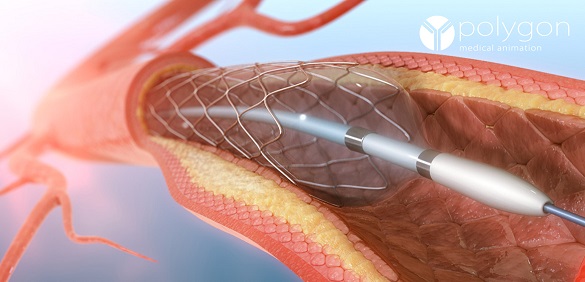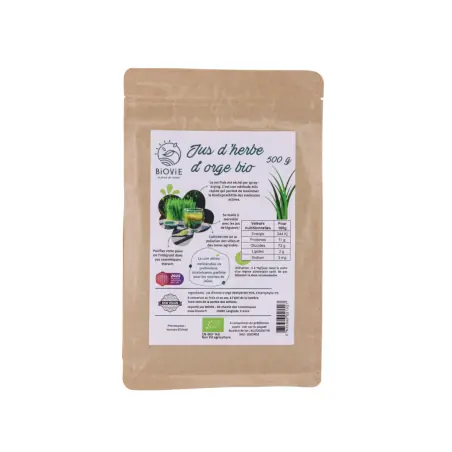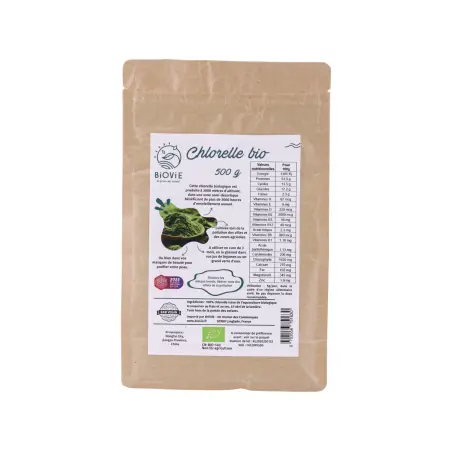It seems like your message got cut off. Could you please provide the complete text you would like translated from French to English? atherosclerosis It is an arterial disease that develops with age and family history, specifically in people with cardiovascular diseases such as hypertension or hypercholesterolemia. Excessive alcohol consumption is an aggravating factor.
Although medication treatments are often recommended to treat this disease, more and more people are turning to natural treatments to help prevent or reduce the symptoms of atherosclerosis. . In this article, we examine some of the natural treatments available for atherosclerosis.
What is atherosclerosis ?
In the case of atherosclerosis, an atheroma plaque forms inside the wall of the coronary arteries, the two arteries that supply blood to the heart. With the narrowing of the arteries' caliber, blood flow is reduced, and the heart is less well irrigated and oxygenated, which increases the risk of angina pectoris (angina) or myocardial infarction (heart attack) due to the formation of clots or plaques.
How to get rid of atherosclerosis ?
To "unclog" the arteries, official medicine offers different solutions:
- A thrombolysis, that is to say, a drug treatment aimed at dissolving thrombi (blood clots) ;
- One aorto-coronary bypass, a surgical procedure involving the creation of one or more bypasses using a vein taken from the patient to circumvent the narrowing or coronary stenosis ;
- A angioplasty with stent placement.
The stent, also known as an endocavitary prosthesis or endoprosthesis, is a medical device used in cardiology and vascular surgery. It is a small metal spring a few millimeters in diameter and one or more centimeters long. When introduced into an artery, it acts like a framework to keep it open. Nowadays, the placement of a stent accompanies the vast majority of transluminal arterial angioplasties (TAA).
Today, all cardiovascular techniques that have saved lives are hailed as progress, and this is therefore understandable. That said, we have the right to ask a few questions about the reality of this "progress" if we take the time to reflect for a few moments.
The questions raised by these treatments for atherosclerosis
Are all these undeniable technical and technological advancements truly a step forward for humanity ?
Can we truly speak of progress when a vast majority of people do not adhere to the basic rules of healthy living as proposed by hygienism or vital hygiene, and then are forced to undergo surgery to avoid the worst... at least temporarily?
How can one accept as a "normal course" to undergo surgery around the age of fifty in order to continue living "normally," at least in appearance ?
When one demonstrates a minimum of "common sense," it seems more favorable to respect all health factors throughout one's life, thereby avoiding the need for surgery, even though science has made progress and wonders in this field.
On the other hand, undergoing surgery will not solve the underlying problem as long as all the causes have not been eliminated and our vessels are not restored to their intact state, meaning they have retained all their flexibility and integrity. According to the clinical studies of Doctor JH. Tilden, the respect for health factors should begin years before any disorders manifest.
While some swear by science, others have guilt-inducing statements such as: "Sorry, but if you are sick today, it's your own fault."
We've all more or less heard this disparaging remark before, as it is very blameworthy. That being said, without caution, it remains true that it has the merit of reminding us of the responsibility we all individually have towards our own health capital. A "good" lawyer will find numerous mitigating circumstances for this responsibility: the family environment, education, advertising information, media, medical information, deliberately biased and incorrect, the weight or force of habits, lack of time, etc.
On the other hand, "biological laws" are not sensitive to these arguments.
Whatever the "health disorder" that affects us, the true causes are always the same: toxins (in the broadest sense), deficiencies (in the broadest sense), and excesses (in the broadest sense).
How to naturally dissolve atheromatous plaques ?
I propose a preventive naturopathic protocol using natural remedies to avoid the formation of plaques on the arterial wall, which promotes the occurrence of a stroke:
- Fasting for several days under medical supervision.
- Freshly pressed vegetable juice diet using a juicer (carrots and green vegetables like the cabbage family), to which we add marine magnesium + 1 tablespoon of dehydrated barley grass juice powder + 5 drops of vitamin D + 2 capsules of omega-3 per meal or a teaspoon oflinseed oil in his/her daily diet.
What are the bad eating habits and what is the right diet to avoid the risk of atherosclerosis ?
- Greatly reduce or even eliminate alcohol consumption.
- Eliminate untimely snacking between meals and reduce sugar consumption, as its excess promotes an increase in certain saturated fatty acids, which turn out to be harmful foods contributing to the process of atherosclerosis.
- Ideally, consume only organic, healthy, unrefined foods that are in season and from the local region.
- Absolutely avoid fried foods.
- Avoid pastries, candies, sweets, industrial cakes, foods rich in industrial sugar, etc.
- Eating beneficial and living foods every day such as raw vegetables, sprouted seeds, young cereal shoots, and fresh vegetable and grass juices, fresh seaweed.
- Consume as little meat as possible.
What are the effects of garlic in the treatment of atherosclerosis ?
It looks like your text got cut off. Could you please provide the complete text you would like translated from French to English?garlic is a plant commonly used in traditional medicine for its healing properties. It has been studied for its potential in the prevention and treatment of atherosclerosis due to its beneficial effects on cardiovascular health. . A Study published in 2022 examined the effect of garlic on markers of inflammation and oxidative stress in patients with atherosclerosis. The researchers found that garlic consumption had reduced the levels of these markers, suggesting that garlic could have a protective effect against atherosclerosis.
Several other studies have shown that consuming garlic can help reduce excess blood cholesterol, a significant risk factor for the development of atherosclerosis. Indeed, garlic contains sulfur compounds such as allicin, which have antioxidant and anti-inflammatory properties. These compounds can help reduce the development and presence of fatty plaques in the arteries by limiting the oxidation of arteries and lipids and preventing immune cells from accumulating in the blood vessels. Furthermore, garlic can also help lower blood pressure, another major risk factor for atherosclerosis.
Can chlorella help against atherosclerosis ?
The chlorella Chlorella is a freshwater green algae that is rich in nutrients and antioxidants. Although chlorella has proven to be a very beneficial algae for health, there is not enough scientific evidence to support the claim that chlorella can help. specifically in the treatment of atherosclerosis.
That being said, some components of chlorella may potentially help reduce the main risk factors associated with atherosclerosis. For example, studies have shown that it can help lower blood cholesterol levels, a major risk factor for atherosclerosis. Additionally, studies have also suggested that chlorella may have anti-inflammatory and antioxidant properties that could help reduce oxidative stress and inflammation, two factors that contribute to the formation and presence of atherosclerotic plaques.
What drink cleans the arteries ?
There is no specific drink that can combat artery blockage and completely clean them, but certain juices and beverages can help reduce risk factors associated with atherosclerosis and improve cardiovascular health.
Pomegranate juice: The pomegranate is rich in antioxidants, particularly polyphenols, which can help reduce inflammation and oxidation of the arteries. Studies have shown that consuming pomegranate juice can help reduce blood pressure and improve endothelial function, which is important for the health of blood vessels.
Beet juice: Beetroot is rich in nitrates, which can help improve blood circulation by dilating blood vessels. Studies have shown that consuming beetroot juice can help reduce blood pressure and improve endothelial function.
Green tea: Green tea is rich in catechins, which have antioxidant and anti-inflammatory properties. Studies have shown that consuming green tea can help reduce high cholesterol levels and blood pressure, two major risk factors for atherosclerosis.
Lemon water: Lemon is rich in vitamin C, an antioxidant that can help reduce inflammation and prevent damage caused by free radicals. The consumption of lemon water can also help stimulate digestion and eliminate toxins from the body, which can have beneficial effects on cardiovascular health.
Some advice...
Large portion of tender and hard raw vegetables (beware of excess raw vegetables which can cause inflammation of the digestive tract), greens, and moderately acidic and semi-acidic watery fruits, taking into account the individual's condition who consumes them. The regular consumption of organic eggs, eaten soft-boiled, presents no drawbacks for many people.
Exercise is life, so it is important to incorporate physical activity, body exercises, walks, and movement into our daily routines to stay healthy. Additionally, it has been proven that people who engage in physical labor throughout their lives are very rarely subject to arteriosclerosis.
Start the day with a skin exfoliation for 2 to 4 minutes. For this, take a good bristle brush that must have a handle in order to reach all parts of the body. We will pay particular attention to brushing the shoulders, the nape of the neck, and the left side of the rib cage. A glove and a horsehair band are also quite suitable.
To finish, do a bit of jogging in place, or orthotherapy exercises with thoracic release if possible.

















